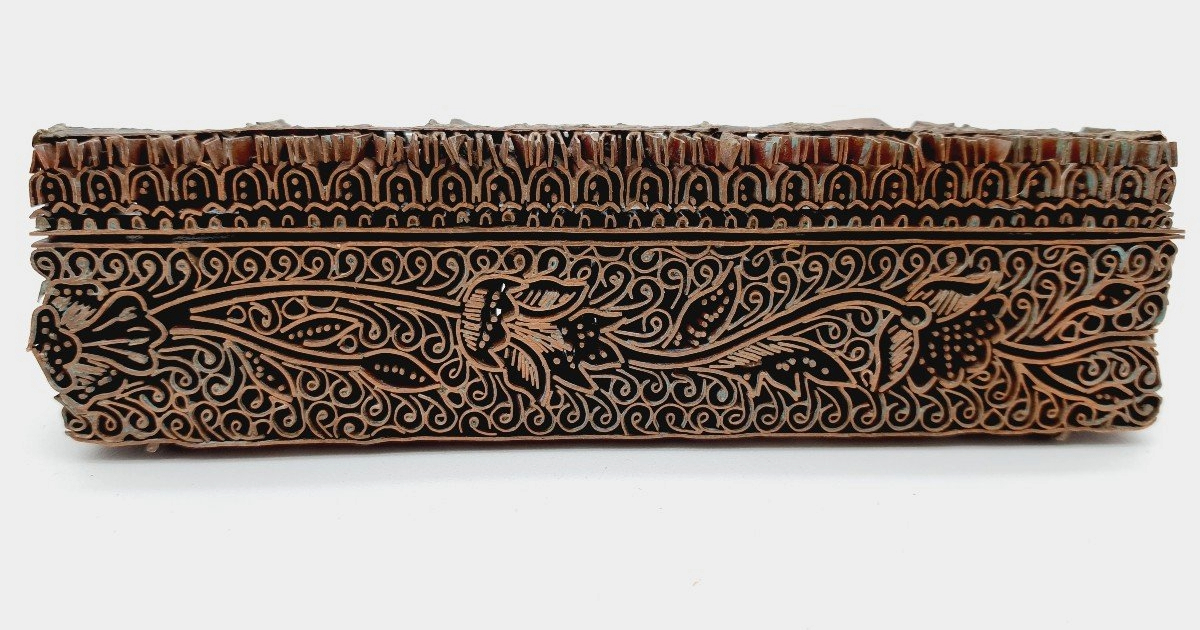Discover the Ancient Secret Behind Timeless Fabric Patterns!

source: Proantic
In the labyrinth of cultural artifacts that cradle the rich tapestry of human heritage, the vintage copper batik stamp, or ‘cap’ as it is traditionally known, emerges as a quintessential emblem of craftsmanship and artistic ingenuity. This article delves into the nostalgic realms of the vintage copper batik stamp, exploring its historical significance, craftsmanship, and the pivotal role it played in the art of batik making.
Batik, a technique of wax-resist dyeing applied to whole cloth, is a form of art that dates back millennia, with roots deeply entrenched in the islands of Indonesia, particularly Java. The traditional method of batik making involved the meticulous hand-painting of wax onto fabric to create intricate patterns and designs. However, the advent of the copper stamp in the 19th century marked a revolutionary turn in the batik-making process, introducing a method that was not only less time-consuming but also capable of replicating patterns with astonishing precision.

Crafted with an artisan’s touch, each vintage copper batik stamp is a masterpiece of metalwork. Artisans, known as ‘tukang cap’, would skillfully hand-carve these stamps from blocks of copper, etching into the metal elaborate designs that reflected the cultural narratives, flora, fauna, and geometric patterns iconic to their regions. The process demanded not only artistic vision but a profound understanding of the copper’s physical properties to ensure that each stamp could effectively transfer wax onto fabric.
The creation of these stamps was an art form in itself, often passed down through generations, with each stamp embodying the unique signature of its maker. These stamps were not merely tools but vessels of heritage, encapsulating the socio-cultural milieu of their time.

The use of the copper batik stamp simplified the batik-making process, enabling artisans to produce cloth with repetitive patterns more efficiently. The technique involved heating the copper stamp and dipping it into molten wax, then pressing it onto the fabric to transfer the design. Once the wax had cooled and hardened, the fabric was dyed. The wax-resist areas retained the fabric’s original color, while the rest took on the hue of the dye. This process could be repeated to add more colors and complexity to the design. After the final dyeing, the wax was removed, revealing the intricate patterns protected underneath.
Today, the vintage copper batik stamp is a nostalgic remnant of a bygone era, revered not only for its artistic and cultural significance but also for the indelible mark it has left on the world of textiles. Museums, collectors, and batik enthusiasts treasure these stamps as invaluable artifacts that offer a glimpse into the past, showcasing the unparalleled craftsmanship and artistic expression of their makers.

In the contemporary world, where mass production has become the norm, the vintage copper batik stamp stands as a testament to the human capacity for creativity and the enduring value of handmade art. It reminds us of the time when each piece of fabric told a story, woven not just with threads but with the aspirations, traditions, and lives of the artisans themselves.
The vintage copper batik stamp, therefore, is not merely a tool but a bridge connecting us to the rich cultural heritage of batik making. It serves as a reminder of the importance of preserving traditional art forms, encouraging us to appreciate and sustain the legacy of craftsmanship that has been handed down through generations. As we look back with nostalgia at these exquisite pieces of history, we are reminded of the beauty that humanity is capable of creating when imagination is fused with the mastery of one’s craft.

